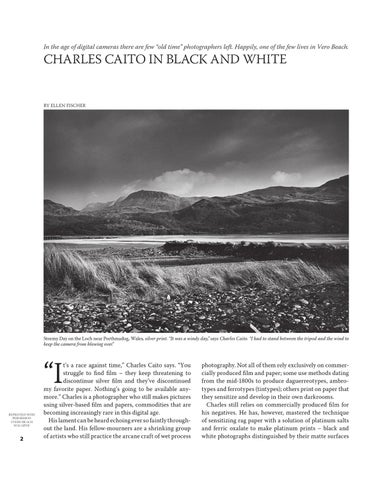In the age of digital cameras there are few “old time” photographers left. Happily, one of the few lives in Vero Beach.
Charles Caito in Black and White BY ellen fischer
Stormy Day on the Loch near Porthmadog, Wales, silver print. “It was a windy day,” says Charles Caito. “I had to stand between the tripod and the wind to keep the camera from blowing over.”
“I
REPRINTED WITH PERMISSION ©VERO BEACH MAGAZINE
2
t’s a race against time,” Charles Caito says. “You struggle to find film – they keep threatening to discontinue silver film and they’ve discontinued my favorite paper. Nothing’s going to be available anymore.” Charles is a photographer who still makes pictures using silver-based film and papers, commodities that are becoming increasingly rare in this digital age. His lament can be heard echoing ever so faintly throughout the land. His fellow-mourners are a shrinking group of artists who still practice the arcane craft of wet process
photography. Not all of them rely exclusively on commercially produced film and paper; some use methods dating from the mid-1800s to produce daguerreotypes, ambrotypes and ferrotypes (tintypes); others print on paper that they sensitize and develop in their own darkrooms. Charles still relies on commercially produced film for his negatives. He has, however, mastered the technique of sensitizing rag paper with a solution of platinum salts and ferric oxalate to make platinum prints – black and white photographs distinguished by their matte surfaces
